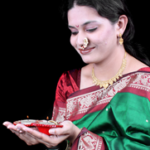
The Hindu “Festival of Lights” known as Diwali (or Deepavali) runs for five days. Diwali is one of the most popular holidays in the Hindu diaspora, especially in the United States, where the Hindu population has topped 1 million — tripling in 15 years.
The holiday is also observed by many Sikhs and Jains, and so puts a spotlight on the range of South Asian religious communities in the United States.
Diwali symbolizes the victory of dharma, and good over evil. The word is a variation of the Sanskrit word “Deepavali” and refers to the rows of earthen lamps celebrants place around their homes. Hindus believe that the light from these lamps symbolizes the illumination within the individual that overwhelms ignorance, represented by darkness.
Background
Diwali commemorates the return of the avatar Lord Ram (the incarnation of Lord Vishnu), his wife Sita and brother Lakshman to their capital, Ayodhya, after 14 years of exile. The residents of Ayodhya, overjoyed at the return of their beloved king, lit lamps in his honor. Thus, the entire city looked like a row of lights.
Diwali is also observed by Sikhs, who celebrate the release of the Sixth Guru, Hargobind, from captivity by the Mughal Emperor Jehangir, and Jains, who commemorate the day Lord Mahavira attained nirvana, or liberation, after his death in 527 B.C.
At Diwali, relatives and friends exchange food gifts, and at weddings, the families of the bride and bridegroom exchange gifts. Otherwise, gift exchange isn’t central to mainstream Hindu tradition.
For more information, see ReligionLink’s reporting guide on Hinduism.
-
Diwali – BBC
BBC information page on the Hindu festival of Diwali.
-
Diwali, India’s Festival of Light – National Geographic Kids
National Geographic Kids information page on Diwali.
Articles and publications
-
“What’s Diwali–and Should I Bring Presents?”
Read a column about Diwali gift-giving by author Arthur Magida, posted at Beliefnet.com.
-
“Lighting the Lamps for Diwali…At Home and Abroad”
Read a story, posted at Beliefnet.com, about how Hindus in America celebrate Diwali.
